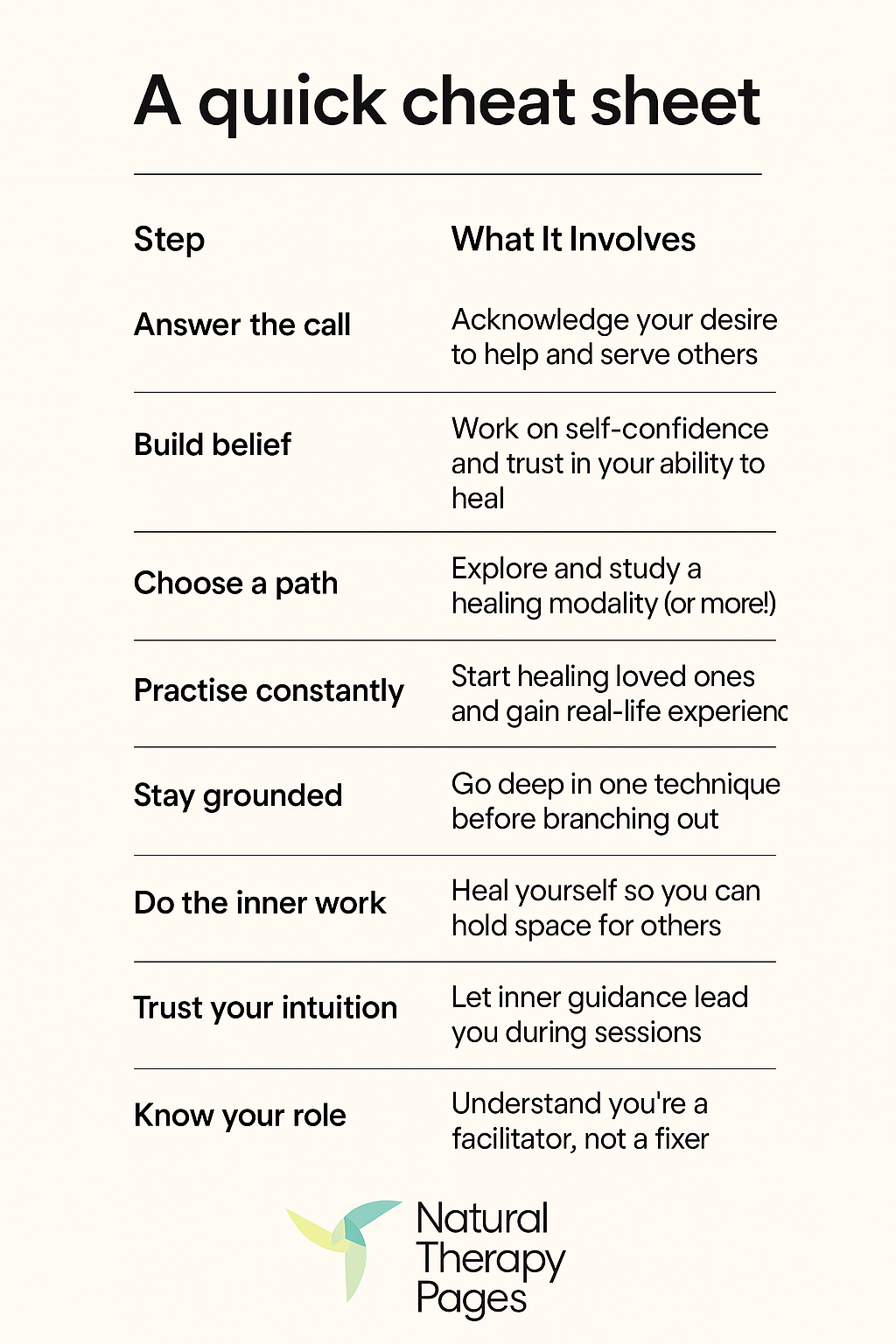
Ever had that odd, persistent feeling like you’re meant to help people—but not just any way? I’m talking the deeper stuff. Healing work. Whether it’s easing emotional pain, clearing energetic blockages, or simply sitting with someone in their darkest hour, the idea of being a healer has probably tugged at you more than once.
You’re not alone. Many natural health practitioners started out just like you—curious, called, and a little unsure of what to do next.
So let’s break it down together. No fluff, no guru-talk. Just a friendly guide to help you figure out if this path is for you—and how to walk it.
Want Trusted Practitioner Referrals For Your Health Condition Now?
Click the button below to get free referrals for the leading practitioners on Natural Therapy pages now. 100% Secure & Easy. Over 1.2M referrals made so far.
1. Feeling the calling
Not everyone gets it. But if you’re reading this, you probably do.
Some people know from childhood they’re here to heal. Others stumble upon it after a completely different career—burned out, fed up, or just feeling like something’s missing. And suddenly, they find themselves asking, “Is this it? Or is there something more meaningful I’m supposed to be doing?”
That gut feeling, that urge to help people in a way that goes deeper than surface-level fixes—that’s the calling.
However, the energy healer, life coach, counsellor or yoga teacher cannot be suppressed forever. Sooner or later they will step out of their hiding place and find a way to enter the realm of healing to achieve their higher purpose in life.
2. Believing in yourself (even when it’s hard)
Here’s where things get a bit real.
You need to believe you can do this. Sounds simple, but it’s not always easy—especially if you’re used to doubting yourself or worrying you’re not “qualified” enough to help someone heal. But belief is everything. It unlocks your ability to connect with healing energy, your intuition, and the people you’re meant to help.
Of course, belief comes with action. That means doing the work—on yourself first, then others. Read. Learn. Practise. Heal your own wounds so you can hold space for others to heal theirs.
3. Choosing your path (there’s more than one way)
Confidence and belief in your calling and your abilities is pivotal to succeeding as a healer. Healing wisdom and energy is certain to flow to and through you once you have mastered your belief in yourself as a healer.
With belief and self-confidence, you can dive deep into the process of personal healing, a prelude to the ins and outs of energy healing, spiritual healing, psychic healing and other forms of healing. Once you can heal yourself, you can heal anybody regardless of the nature of their problem.
The road to your healing path consists of several curves and intersections, giving you a free hand to decide how and where to learn a specific modality. You may consider short certification programs, diploma courses or degree programs, depending on your end goal. Several schools specialising in complementary medicine offer functional kinesiology courses, modern hypnotherapy courses, Time Line Therapy training courses as well as programs on various manual therapies and energy-based healing, including Healing Touch, Traditional Chinese Medicine, remedial massage and Reiki, to name a few.
4. Trusting your intuition
Let’s be real. Logic is great. But when it comes to healing, your intuition is the MVP.
You might get a nudge to place your hand somewhere your client didn’t mention hurting. Or a random thought pops in during a session that ends up being exactly what they needed to hear. That’s not just coincidence. That’s your inner knowing kicking in.
And yep—it can feel weird at first. But the more you trust it, the more accurate it gets.
5. Getting introspective (aka doing the inner work)
Every great healer has done a deep dive into their own psyche. Healing isn’t about slapping crystals on someone and calling it a day. It’s about understanding the emotional, spiritual, and energetic roots of pain—and you can’t do that without looking at your own.
Spend time in self-reflection. Meditate. Journal. Go to therapy. Do breathwork. Sit in stillness. Cry when you need to. The deeper you go, the more powerful your healing work becomes.
And hey, don’t rush this part. It’s not a race.
6. Putting it into practice
You can read all the books in the world, but healing is a doing art.
Start small. Work on friends, family, pets—heck, even plants if you want. Offer healing sessions for free or by donation. Volunteer at wellness events or community centres. These experiences build your confidence and help you get comfortable with your process.
And don’t worry about being perfect. Nobody is. Every healer makes mistakes, learns from them, and grows.
7. Staying grounded
With so many healing modalities out there (Reiki, Theta, Pranic, crystal healing, sound therapy—you name it), it’s easy to feel overwhelmed. The key? Pick one to begin with and go deep. Master it. Build your confidence.
Then, if it feels right, blend in others. Eventually, you’ll create your own signature method—a style that’s uniquely yours.
Also, pro tip: Stay humble. Healing is a lifelong journey. You’ll never stop learning.
8. Knowing your role
Here’s something a lot of new healers need to hear: You are not here to fix anyone.
You’re not a saviour. You’re a guide. A facilitator. The real healing? That comes from within the client.
Your job is to create a safe, supportive space. Share tools. Offer energy. Help uncover root causes. But ultimately, they have to be ready to receive and do the work.
So take the pressure off. You’re not responsible for their outcome—you’re responsible for showing up with integrity and heart.
A quick cheat sheet
Here’s a little table to summarise some of the key steps:

Ready to begin?
Becoming a healer isn’t about being perfect. It’s about being human, open-hearted, and willing to grow alongside the people you help.
Whether you're called to soothe physical aches, emotional wounds, or spiritual confusion, there's a place for you in this world. People need what you have to offer—even if you’re still figuring out what that looks like.
So... what’s your first step? A course? A book? A conversation with a practitioner you admire?
Whatever it is, take it. And when you're ready, Natural Therapy Pages has plenty of resources to help you find courses, connect with practitioners, and build your path.
You’ve got this.
|
Do you have a natural health & wellness business? |



